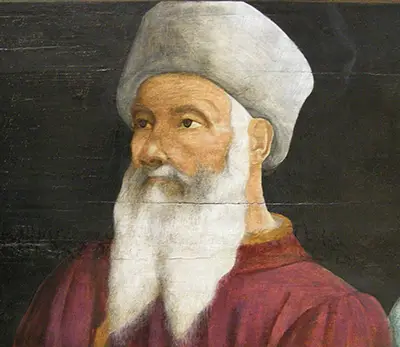Paolo Uccello was an artist obsessed by the use of perspective in art and spent many a late night studying and experimenting with different creative ideas
Born Paolo di Dono, this artist was also heavily involved in mathematics, in a similar way to Renaissance master Leonardo da Vinci. Uccello most wanted to produce depth, a third dimension if you like, to his paintings and many of his developments would be used by other artists who followed on after the 15th century.
Most of the key names in Italian art during this time would have schools of artists who would help out with larger commissions and also follow their achievements onwards even after their death. Two artists from a more classicist style, Giovanni Bellini and Andrea Mantegna are examples of this, but Uccello had no such legacy himself. Whilst they helped to drive the Venetian school of painting onwards, Uccello's influence was more patchy but never the less, still significant.
The style of Uccello's paintings is considered by most to be in line with the Late Gothic movement, tipified by a bold use of colour and also a frequent use of battle scenes and pageantry themes. His unusual approach is perhaps partly due to his independant character, rarely spending time with other artists. He was considered somewhat secretive but this did not hold back his ability to procure impressive commissions as his reputation continued to build.
Paolo Uccelli translates as "Paul of the Birds" and this nickname was afforded to him due to his great enthusiasm for depicting birds and animals in his paintings. His own home was full of a wide collection of drawings and prints from which he would develop his own depictions of a variety of creatures. Within his ouevre you will find many aggressive animal portrait scenes including a lion fighting a snake.
Uccelli would use his scientific and mathematical mind to constuct compositions where space and perspective was planned very precisely. His method of depicting scenes was to influence many later artists such as Piero della Francesca, Albrecht Dürer and Leonardo da Vinci. His own techniques for perspective may have sometimes drifted his work away from direct reality, but not to the detriment of his artistic work.
Uccello was to hone his skills in depicting nature over time and his precise handling of colour for various landscape elements would push his reputation in this genre. Many had struggled with the precise colouring of trees, prior to Uccello, for example. Religious topics were common across Renaissance art and during his time in Florence the artist would make use of his new found skills in landscape painting across the background of several religious frescos such as Deluge, Noah's sacrifice and Noah's drunkenness. Such topics were popular in Florence at that time and helped to promote his name in that city (Michelangelo famously produced frescos in the Sistine Chapel of Noah's Ark, The Flood and The Deluge).
Uccello would also accept commissions in Venice, another highly significant location in the various stages of the Renaissance. His time here was during the 1420s and 1430s and would bring another strand of influence into his work. That region remains best known for the work of one of the true masters of colour, Titian.
Lorenzo Ghiberti, a famous Italian sculptor, would provide Paolo with an artistic apprenticeship during his mid to late teens and elements of his work would rub off on Uccello. The gothic approach of Ghiberti is clearly visible throughout his young pupil's oeuvre and several battle scenes completed by his master may also have influenced the young man's decision to make use of this genre on several occassions in his own career. The budding artist would also meet Donatello during this time, and they would remain close for many years.




